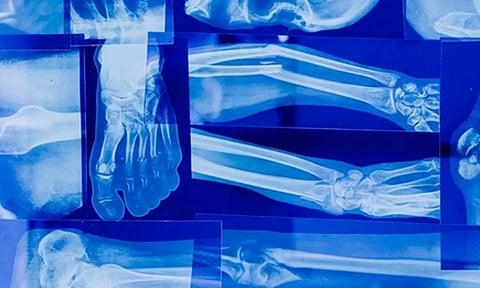

NEW YORK: Per- and polyfluoroalkyl substances (PFAS), manufactured chemicals used in products such as food packaging and cosmetics, can lower bone mineral density, which can lead to osteoporosis and other bone diseases, according to a study.
A growing body of research has also linked the chemicals to reproductive problems, increased cancer risk and other health issues.
In the study, researchers from the Keck School of Medicine of University of Southern California (USC) examined two groups of young participants -- 304 adolescents.
For each doubling of baseline perfluorooctanesulfonic acid (PFOS), one type of PFAS, participants had an average decrease in bone mineral density of .003 g/cm2 per year at follow-up.
When baseline levels of PFOS doubled, participants had an average of .032 g/cm2 lower baseline bone mineral density, though no significant change was observed over time.
“Many existing studies haven’t included participants this young, but we’re now able to see that this association is already happening at a time when bones are supposed to be developing,” said lead author Emily Beglarian, doctoral student in the Keck School of Medicine.
The researchers said the findings, published in the journal Environmental Research, highlight the need for stricter regulation of PFAS, which have contaminated public drinking water, food and soil.
“PFAS are ubiquitous -- we are all exposed to them,” said Vaia Lida Chatzi, Professor of population and public health sciences at the Keck School.
“We need to eliminate that exposure to allow our youth to reach their full potential in terms of bone development to help them avoid osteoporosis later in life.
“It’s important to regulate PFAS as a class, because we are not just exposed to one chemical, we are exposed to thousands of chemicals,” Chatzi said.
Bone mineral density increases during adolescence, peaks between the ages of 20 and 30, then slowly decreases throughout adulthood. Peak bone mineral density helps predict whether a person will get osteoporosis later in life, prompting the researchers to investigate how PFAS can affect young people.
“We want to make sure we’re not exposing ourselves to things that harm our bone development, because it has implications over the rest of our lives,” Beglarian said.